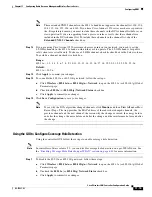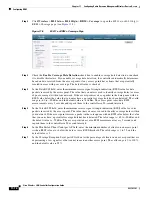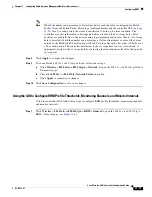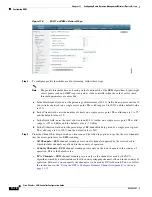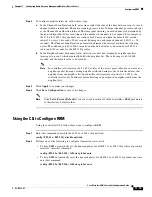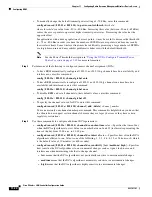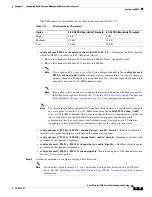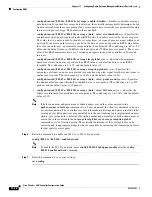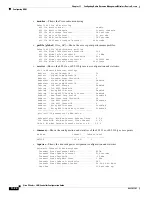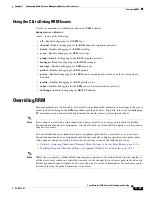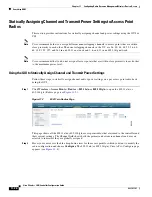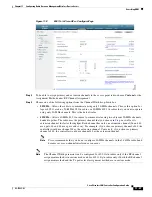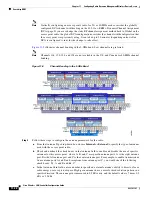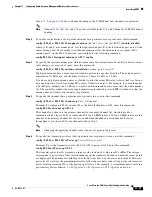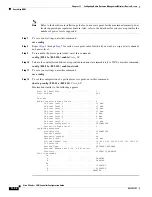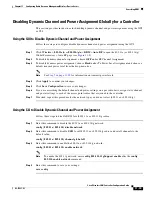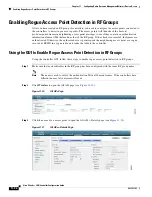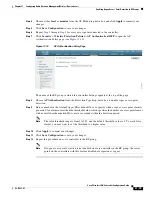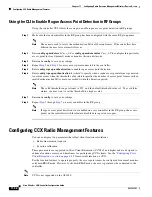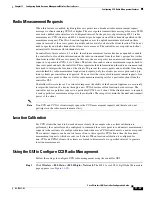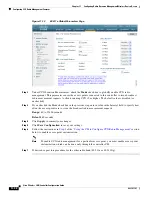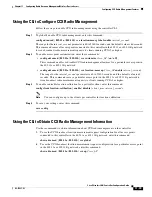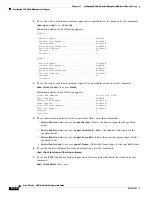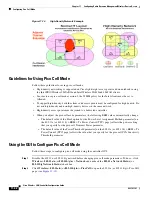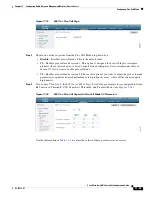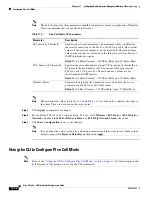
11-29
Cisco Wireless LAN Controller Configuration Guide
OL-17037-01
Chapter 11 Configuring Radio Resource ManagementWireless Device Access
Overriding RRM
If you have a high-gain antenna, enter a value that is twice the actual dBi value (refer to the
Cisco
Aironet Antenna Reference Guide
for antenna dBi values). Otherwise, enter 0. For example, if your
antenna has a 4.4-dBi gain, multiply the 4.4 dBi by 2 to get 8.8 and then round down to enter only
the whole number (8). The controller reduces the actual equivalent isotropic radiated power (EIRP)
to make sure that the antenna does not violate your country’s regulations.
d.
Choose one of the following options from the Diversity drop-down box:
•
Enabled
—Enables the antenna connectors on both sides of the access point. This is the default
value.
•
Side A
or
Right
—Enables the antenna connector on the right side of the access point.
•
Side B
or
Left
—Enables the antenna connector on the left side of the access point.
Step 6
To assign an RF channel to the access point radio, choose
Custom
for the Assignment Method under RF
Channel Assignment and choose a channel from the drop-down box.
The channel you choose is the primary channel (for example, channel 36), which is used for
communication by legacy 802.11a radios and 802.11n 20-MHz radios. 802.11n 40-MHz radios use this
channel as the primary channel but also use an additional bonded extension channel for faster
throughput, if you chose 40 MHz for the channel width in
.
Note
The Current Channel field shows the current primary channel. If you chose 40 MHz for the
channel width in
, the extension channel appears in parentheses after the primary channel.
Note
Changing the operating channel causes the access point radio to reset.
Step 7
To assign a transmit power level to the access point radio, choose
Custom
for the Assignment Method
under Tx Power Level Assignment and choose a transmit power level from the drop-down box.
The transmit power level is assigned an integer value instead of a value in mW or dBm. The integer
corresponds to a power level that varies depending on the regulatory domain in which the access points
are deployed. The number of available power levels varies based on the access point model. However,
power level 1 is always the maximum power level allowed per country code setting, with each successive
power level representing 50% of the previous power level. For example, 1 = maximum power level in a
particular regulatory domain, 2 = 50% power, 3 = 25% power, 4 = 12.5% power, and so on.
Note
Refer to the hardware installation guide for your access point for the maximum transmit power
levels supported per regulatory domain. Also, refer to the data sheet for your access point for the
number of power levels supported.
Note
If the access point is not operating at full power, the “Due to low PoE, radio is transmitting at
degraded power” message appears under the Tx Power Level Assignment section. Refer to the
“Configuring Power over Ethernet” section on page 7-70
for more information on PoE power
levels.
Step 8
To enable this configuration for the access point, choose
Enable
from the Admin Status drop-down box.
Step 9
Click
Apply
to commit your changes.

